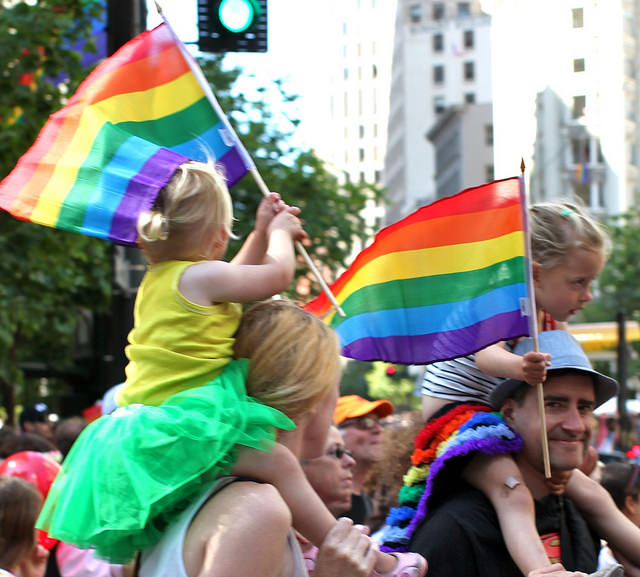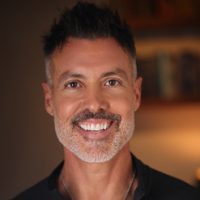“Uncle Chris, is she your girlfriend?”
Kids really do say the darnedest things because what occurred to me with that question was what wasn’t being communicated. If my sister’s son was in the dark, what about the other kids I know?
How is it that I, who have been out of the closet for 10 years, whose life is dedicated to LGBT advocacy work, an individual who mentors gay youth and prides himself on visibility, have a 6-year-old nephew who doesn’t know his uncle is gay?
I began asking around and the parents I spoke with didn’t feel like their child was old enough to understand. The theme was one of discomfort around addressing the conversation.
This interested me because I remember knowing that I was gay even as a young child. In fact, I was the same age as my nephew.
Studies show that between the age two and three, children start to develop a sense of being male or female, otherwise known as gender identity. Between the age three and five, most kids have a strong sense of being a boy or a girl. As one report I read says, “This is the age (three to five) that children will learn important sexual attitudes from their parents.” Between the ages six and ten, kids are interested in things like pregnancy and gender roles and ask questions like, “where do babies come from?” or “is she your girlfriend?” This is also the age where their outside world begins to influence sexual attitudes, what I call “messages from the playground.”
Messages from the playground are the subconscious beliefs we all pick up in our childhood. We all have them. They formulate our belief system and it’s our belief systems that control the way we operate our lives.
I wondered how many parents I know have considered the possibility that their child is gay. I’m not saying they’re homophobic, I’m addressing the fact we live in a heteronormative society. You are assumed straight upon birth, which creates the closet experience.
The dictionary’s definition of the term benign neglect is “an attitude or policy of ignoring an often delicate or undesirable situation that one is held to be responsible for dealing with.” Benign neglect was a policy proposed in 1969 by Daniel Patrick Moynihan, President Nixon’s Urban Affairs Advisor. During which, Moynihan sent the President a controversial memo, stating, “The time may have come when the issue of race could benefit from a period of ‘benign neglect.’”
I went to a lecture once where it was suggested that benign neglect and racism in the U.S. is directly correlated to events like the death of Trayvon Martin and Michael Brown in Ferguson, MO.
Just because something is benign doesn’t mean it’s not harmful. Not communicating something communicates something.
My sister not having a conversation with her kids about her gay brother communicates something. It communicates being uncomfortable with the conversation, which implies that it’s different, further perpetuating guilt, shame, and the closet experience. As a gay child, this is what I picked up from my surroundings, what wasn’t being communicated, the benign neglect, which formulated my messages from the playground—the subconscious beliefs I had about what it meant to be gay; the internalized homophobia I developed in my childhood.
Internalized homophobia is something that all gay people have to some degree and it’s important to acknowledge because it sheds light on something that has to do with shame. If any of us—gay or straight—has guilt or shame, we will subconsciously seek punishment. That could look like many things, but includes unhappiness, unhealthy relationships, and self-deprecating behavior.
Dr. Brene Brown, a shame and vulnerability research professor, shows that kids start shutting parts of themselves down around middle school. She refers to 4th and 5th grade as the “creativity slump” because kids begin to compare themselves to each other. Her studies show that shame-prone children are more likely to commit suicide, drop out of school, engage in high risk sexual behavior, and experience increased drug use.
I remember walking home from school in 6th or 7th grade. I was by myself and hadn’t even left the school yard, when I suddenly felt someone walk up behind me and whisper in my ear, “faggot.” I literally froze. I was petrified. The first thing I thought was, “oh my god, people know.” The secret I had worked tirelessly day in and day out at hiding was suddenly acknowledged. If he knew, then others must know as well. I remember feeling so much shame I didn’t even turn around. I just kept walking, pretending I didn’t hear what he said.
Shame is something all humans experience to some degree. For the LGBT community, the closet is the place most of us spend our developmental years in and is a hotbed for shame. Research shows that shame and addiction are so closely related they don’t know where one starts and the other begins. Shame is also highly correlated with suicide. The Trevor Project, a suicide prevention and crisis intervention organization, shows that suicide is the second leading cause of death for people between the ages of 10 and 24. Lesbian, gay, and bisexual youth are four times more likely to attempt suicide than their straight peers. And nearly half of young transgender people have seriously thought about taking their lives.
I began to think about the young kids who know they’re gay or transgender but don’t know what to call it or how to address it, how they have feelings of being different and that something is wrong with them. For a child who feels guilty or as though something is wrong with them, they often isolate and withdraw. It made me think about an episode on Oprah I watched many years ago where she interviewed four convicted child sex offenders. She wanted to understand why pedophiles do what they do and to her discovery, they intentionally and methodically seek out vulnerable children. The children who are away from the group, detached, quiet, otherwise withdrawn.
By talking about shame, we are exposing it and nipping it in the bud. Having uncomfortable conversations with children at a young age doesn’t put them at risk, instead, it does the opposite—it keeps them from risk.
My sister may or may not have a gay child. My cousins or friends may or may not have gay children. But they might. At the very least, their child will jump rope or play tag with one on the playground. They most certainly have a family member who is gay. Studies show that anywhere from 2-10% of Americans identify as gay, lesbian, or bisexual. This doesn’t include people who aren’t out of the closet or don’t identify as being gay.
And if the thought has ever crossed your mind of whether or not your child is gay, don’t not talk about it—not communicating something communicates something.
The argument is no longer around whether or not homosexuality is a choice, the argument is around the choice whether or not to unconditionally support the child you love. As a parent, you have the potential to change the trajectory of your child’s life by being patient, supportive, and vulnerable. There are many resources, professional groups and individuals out there.
Ask for guidance, follow your heart, and continue being the parent you’re capable of being.
~
Author: Chris Tompkins
Editor: Katarina Tavčar
Photo: torbakhopper/Flickr











Read 4 comments and reply